
The American public anticipates that the coming half-century will be a period of profound scientific change. This is among the main findings of a new national survey by the Pew Research Center and Smithsonian magazine, which asked Americans about a wide range of potential scientific developments—from near-term advances like robotics and bioengineering, to more “futuristic” possibilities like teleportation or space colonization.
PALACE-iConsulting.com
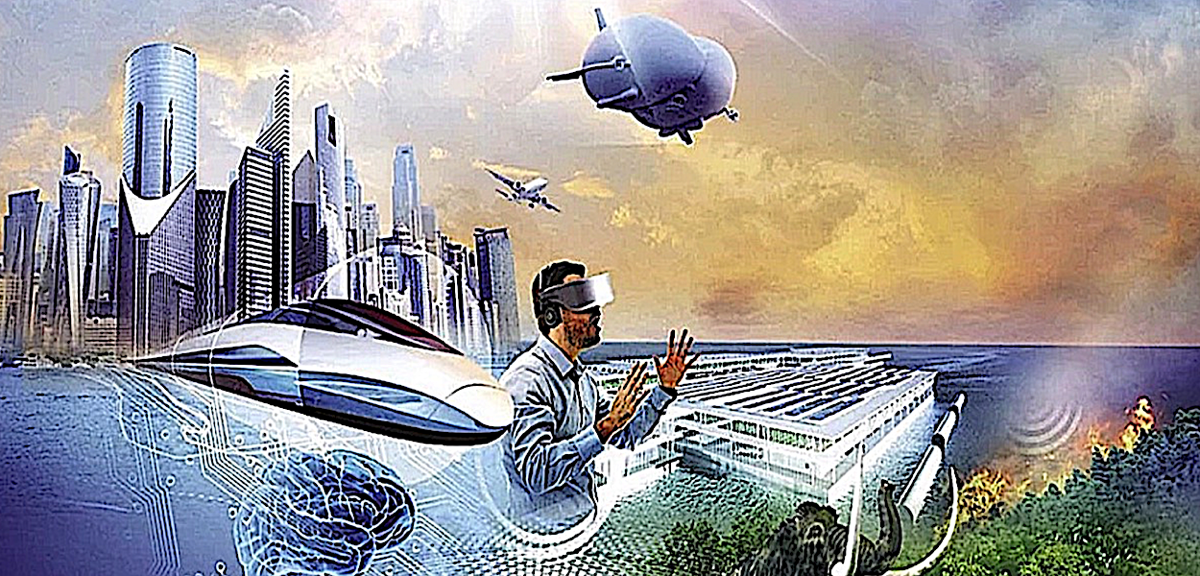
Future Technologies
The coming half-century will be a period of profound scientific change.
Advances like robotics and bioengineering, to more “futuristic” possibilities like teleportation or space colonization.
iConsultingINT.com
Prerequisites for mastering the Future Challenges
Surviving the Challenges of the Future: it is not the survivability of the strongest but the survivability of the ones with the greatest Adaptability Skills!
iConsultingINT.com
Prerequisite for mastering the Future Challenges:
=> Lifelong Continuing Education!<=
Communication
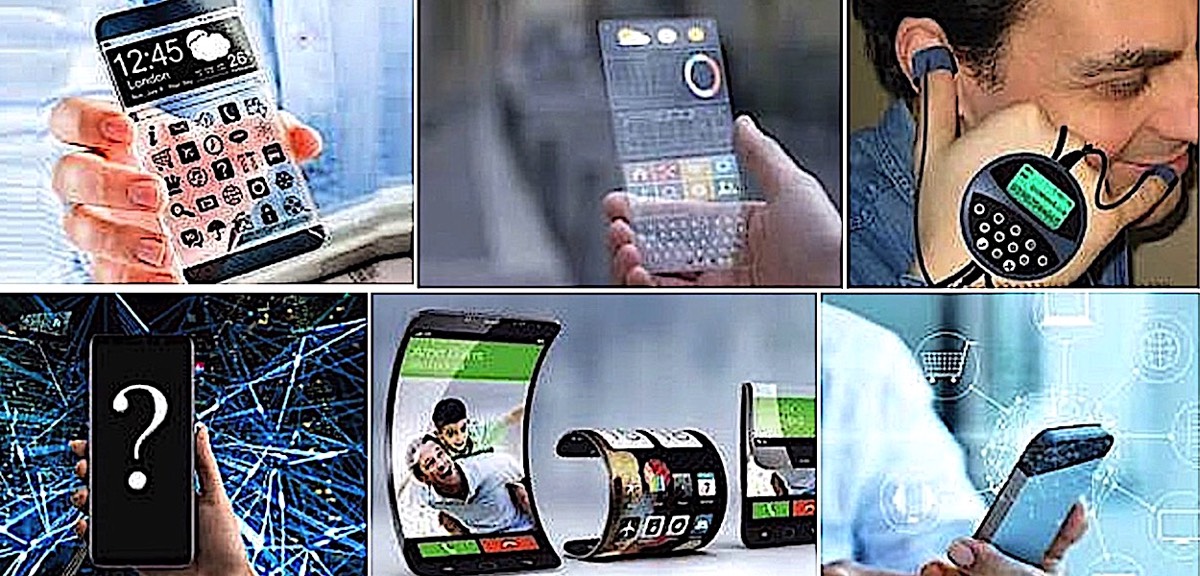
New technological trends accompanying microelectronics include dimunition, digitalization, computerization, globalization of communication, instantization, customatization, automation, robotization, and leisurization. Each of these has a profound and extensive effect in both work and social relations.
Quatum Computing

Realizing the promise of quantum computing is beyond the capacity of any single institution, public or private,
A cadre of physical scientists, engineers and computing experts at Pacific Northwest National Laboratory is poised to participate in the launch of new quantum information science research centers. The National QIS Research Centers represent a five-year commitment by DOE to build and operate an entirely new computing infrastructure based on quantum information.
Each of the five new QIS research centers is comprised of multiple national laboratories, universities and private industry working in tandem to provide U.S. leadership to an area of research widely viewed as critical to economic growth and security in the 21st century.
From developing new materials that will form the backbone of a quantum computer to writing the computer programs that will allow it to operate, PNNL is contributing all along the development curve.
PNNL’s expertise in probing material structure at the atomic level will be used to match materials to their quantum properties, improving performance and stability.
A cadre of physical scientists, engineers and computing experts at Pacific Northwest National Laboratory is poised to participate in the launch of new quantum information science research centers. The National QIS Research Centers represent a five-year commitment by DOE to build and operate an entirely new computing infrastructure based on quantum information.
Each of the five new QIS research centers is comprised of multiple national laboratories, universities and private industry working in tandem to provide U.S. leadership to an area of research widely viewed as critical to economic growth and security in the 21st century.
From developing new materials that will form the backbone of a quantum computer to writing the computer programs that will allow it to operate, PNNL is contributing all along the development curve.
PNNL’s expertise in probing material structure at the atomic level will be used to match materials to their quantum properties, improving performance and stability.
Augmented & Virtual Reality
Apple Vision Pro

With Vision Pro, you have an infinite canvas that transforms how you use the apps you love. Arrange apps anywhere and scale them to the perfect size, making the workspace of your dreams a reality — all while staying present in the world around you. Browse the web in Safari, create a to-do list in Notes, chat in Messages, and seamlessly move between them with a glance.
Apple
Augmented reality and virtual reality technologies are increasing in popularity. Augmented reality has thrived to date mainly on mobile applications, with games like Pokémon Go or the new Google Maps utility as some of its ambassadors.
Augmented Reality (AR) enables digital information to be superimposed and integrated into our physical environment. With many of us now at home during a global pandemic, AR is a tool that can help us transform our immediate surroundings into learning, work and entertainment spaces.
AR can help to bring the outside world in: from a virtual safari with 3D animals in your living room using Google’s AR search on your smartphone to collaborating with avatars of remote colleagues as though you were in the same room by using Spatial.
There are three things AR does very well: visualization, annotation and storytelling. There are examples in each of these areas that are both timely in the current reality of COVID-19 and which can be built upon once cultural institutions, schools and workplaces reopen their doors.
Augmented Reality (AR) enables digital information to be superimposed and integrated into our physical environment. With many of us now at home during a global pandemic, AR is a tool that can help us transform our immediate surroundings into learning, work and entertainment spaces.
AR can help to bring the outside world in: from a virtual safari with 3D animals in your living room using Google’s AR search on your smartphone to collaborating with avatars of remote colleagues as though you were in the same room by using Spatial.
There are three things AR does very well: visualization, annotation and storytelling. There are examples in each of these areas that are both timely in the current reality of COVID-19 and which can be built upon once cultural institutions, schools and workplaces reopen their doors.
Medicine

Experts agree that forecasting the future of healthcare technology isn't difficult-machine learning, artificial intelligence (AI), cloud technologies that apply to clinical, workplace, and financial processes will have better and richer incorporation into the industry.
Hyper automation, the distributed cloud, practical blockchain and human augmentation are just a few of the biggest These technology trends next year that have potential to power both transformation and optimization initiatives.
Hyper automation, the distributed cloud, practical blockchain and human augmentation are just a few of the biggest These technology trends next year that have potential to power both transformation and optimization initiatives.
Robotics

Robotic automation is a rapidly evolving technology. In just a few decades, industrial robots have become commonplace in factory settings across the world, and they only continue to gain popularity for their productivity and profitability.
Robotics have created a revolution in manufacturing – it’s important to keep an eye on what’s coming next because this technology is far from done disrupting the way we manufacture and distribute products.
Top Robotic Automation Trends to Keep an Eye On
Robotics will continue to transform manufacturing in numerous ways, but there are 6 trends in robotic automation that will play a key role in the near future.
1. Adoption of Industrial Internet of Things (IIoT) Technology
Robots will increasingly deploy smart sensors at the edge of production to collect data previously inaccessible to manufacturers. This trend is currently underway and will lead to new levels of productivity and efficiency.
2. Industrial Cybersecurity as a Priority
As robots become more connected to internal systems for data collection, the cybersecurity risks increase. Manufacturers will be forced to address vulnerabilities in their processes and invest heavily in cybersecurity to ensure safe, reliable production.
3. Big Data Analysis Becomes a Competitive Differentiator
Robots will become a key source of information on the factory floor. The collection of data, however, is just one piece of the puzzle. Manufacturers will have to implement systems to organize and analyze all of this information in order to act on it.
4. Open Automation Architectures Will Be Implemented
As robotic automation gains widespread adoption, the need for open automation architectures grows. Large industry players will work with industry organizations to produce standards and open documentation that make robotic integration easier while improving product compatibility.
5. Virtual Solutions Will Invade Physical Processes
Virtual solutions will become an integral part of industrial robotics. One current growing application is the virtual representation of robotic systems for proof of concept and offline programming.
6. Collaborative Robots Will Continue to Grow in Popularity
Collaborative robots can work safely alongside humans and are often far cheaper than their industrial counterparts. As collaborative robots become more capable in tough industrial settings, they will see greater adoption by manufacturers with strict ROI requirements.
Robotic automation has been a revolutionary technology in the manufacturing sector, but it’s still poised to transform the industry over the next couple of years. The six trends above will be some of the most impactful advances in robotic automation in the future.
Robotics have created a revolution in manufacturing – it’s important to keep an eye on what’s coming next because this technology is far from done disrupting the way we manufacture and distribute products.
Top Robotic Automation Trends to Keep an Eye On
Robotics will continue to transform manufacturing in numerous ways, but there are 6 trends in robotic automation that will play a key role in the near future.
1. Adoption of Industrial Internet of Things (IIoT) Technology
Robots will increasingly deploy smart sensors at the edge of production to collect data previously inaccessible to manufacturers. This trend is currently underway and will lead to new levels of productivity and efficiency.
2. Industrial Cybersecurity as a Priority
As robots become more connected to internal systems for data collection, the cybersecurity risks increase. Manufacturers will be forced to address vulnerabilities in their processes and invest heavily in cybersecurity to ensure safe, reliable production.
3. Big Data Analysis Becomes a Competitive Differentiator
Robots will become a key source of information on the factory floor. The collection of data, however, is just one piece of the puzzle. Manufacturers will have to implement systems to organize and analyze all of this information in order to act on it.
4. Open Automation Architectures Will Be Implemented
As robotic automation gains widespread adoption, the need for open automation architectures grows. Large industry players will work with industry organizations to produce standards and open documentation that make robotic integration easier while improving product compatibility.
5. Virtual Solutions Will Invade Physical Processes
Virtual solutions will become an integral part of industrial robotics. One current growing application is the virtual representation of robotic systems for proof of concept and offline programming.
6. Collaborative Robots Will Continue to Grow in Popularity
Collaborative robots can work safely alongside humans and are often far cheaper than their industrial counterparts. As collaborative robots become more capable in tough industrial settings, they will see greater adoption by manufacturers with strict ROI requirements.
Robotic automation has been a revolutionary technology in the manufacturing sector, but it’s still poised to transform the industry over the next couple of years. The six trends above will be some of the most impactful advances in robotic automation in the future.
Transportation
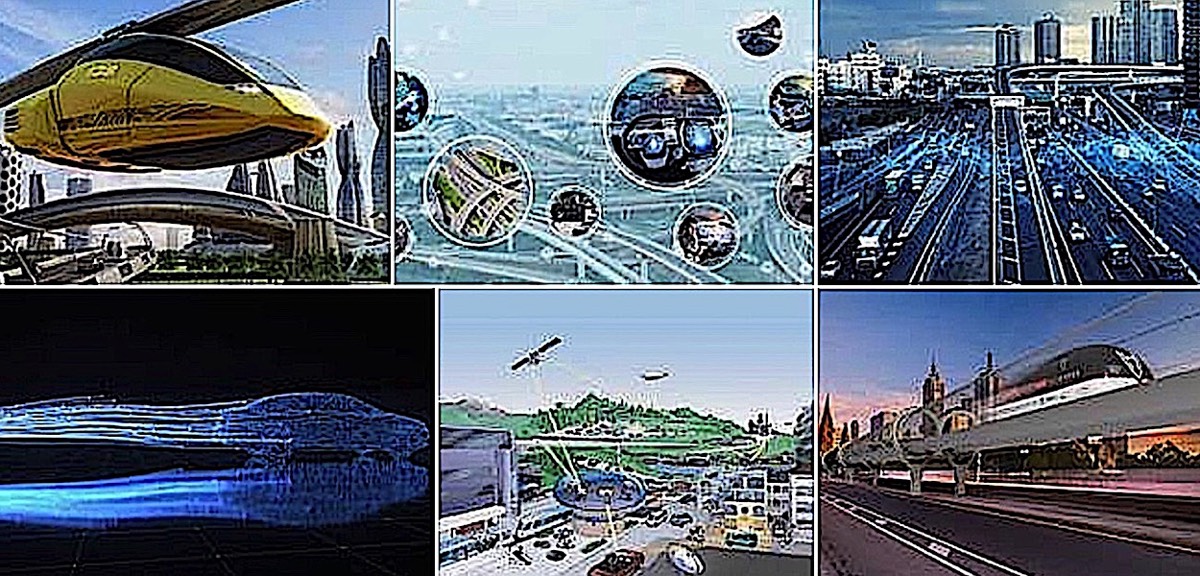
With the depth and breadth of connectivity set to increase, we can expect automatic identification of citizens on the roads and rail and sidewalks and bike lanes, as well as real-time data communication, in the not-too-distant future.
On the road: Driverless cars coming soon
The advent of commercialized jet travel in the 1950s was the last major advance in transportation, with the arguable exception of high-speed trains, which debuted in Japan in 1964. Since then, improvements across all modes of transport have been largely incremental. The Boeing 787 Dreamliner, for example, is lighter and more fuel-efficient than its predecessors, the Airbus A380 is larger, and both rely on the latest computer equipment for flight operations. But neither are fundamentally different from first generation commercial jets. And the same could be said of cars, ships, trains, and even bicycles—they all certainly look different and function far better, but they wouldn’t necessarily shock someone present at their invention.
Above the rails: the floating future of trains
Magnetic levitation, or maglev, technology has been around for decades, but is in commercial use in only a few locations. The technology, powering trains, is mainly a curiosity or tourist attraction, as is the case with the Shanghai Maglev which began operations in 2004 and connects Shanghai Pudong International Airport with a station on the outskirts of the city proper. The first line of substantial length, the Chuo Shinkansen, is planned to come into service in the mid-2020s and will cut the travel time between Tokyo and Nagoya, 350km apart, by half to just 40 minutes. At least ten other countries are now considering the development of maglev lines of their own over the next 20 years, including the UK, Germany, the US, China, India, and Malaysia.
On the road: Driverless cars coming soon
The advent of commercialized jet travel in the 1950s was the last major advance in transportation, with the arguable exception of high-speed trains, which debuted in Japan in 1964. Since then, improvements across all modes of transport have been largely incremental. The Boeing 787 Dreamliner, for example, is lighter and more fuel-efficient than its predecessors, the Airbus A380 is larger, and both rely on the latest computer equipment for flight operations. But neither are fundamentally different from first generation commercial jets. And the same could be said of cars, ships, trains, and even bicycles—they all certainly look different and function far better, but they wouldn’t necessarily shock someone present at their invention.
Above the rails: the floating future of trains
Magnetic levitation, or maglev, technology has been around for decades, but is in commercial use in only a few locations. The technology, powering trains, is mainly a curiosity or tourist attraction, as is the case with the Shanghai Maglev which began operations in 2004 and connects Shanghai Pudong International Airport with a station on the outskirts of the city proper. The first line of substantial length, the Chuo Shinkansen, is planned to come into service in the mid-2020s and will cut the travel time between Tokyo and Nagoya, 350km apart, by half to just 40 minutes. At least ten other countries are now considering the development of maglev lines of their own over the next 20 years, including the UK, Germany, the US, China, India, and Malaysia.
Homes
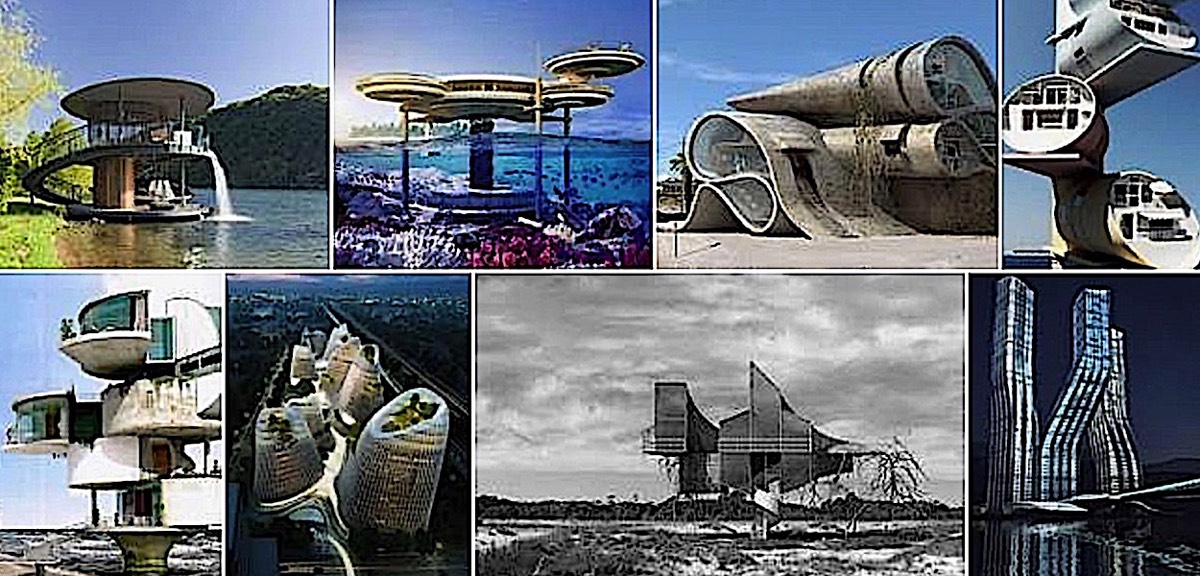
The house of the future has to be comfortable and eco-friendly with integrated Internet of Things. One of the important things in the house of the future is security. Fingerprint recognition technology locks and thieves can't steal any expensive things. The solar energy is the main advantage in the house of the future.. The houses of the future can make our life easier and more comfortable…
Cities
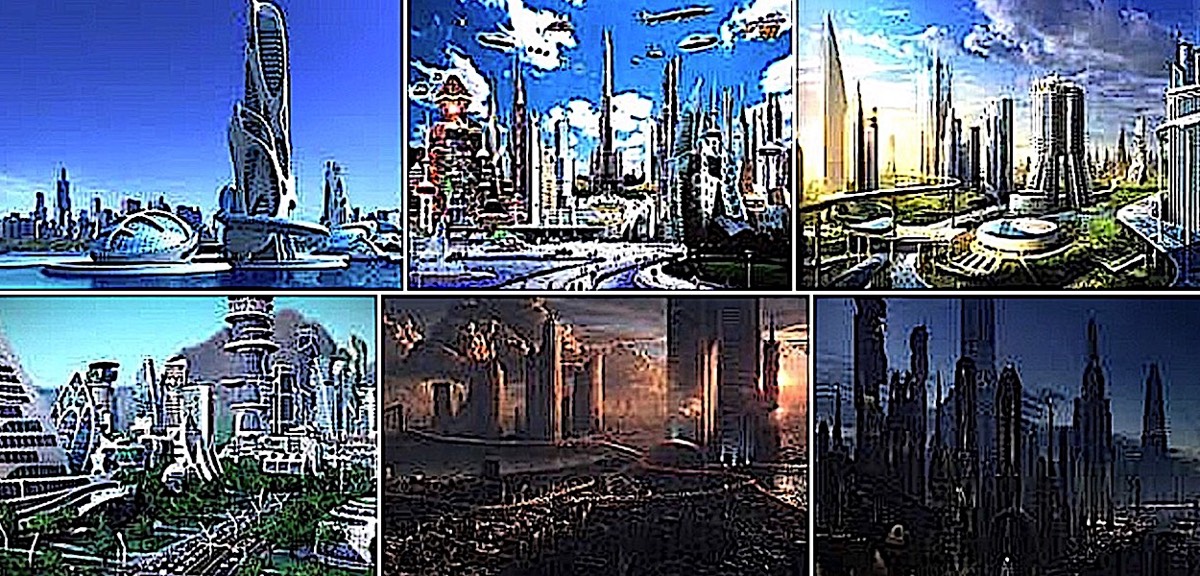
POPULATION: 2050
City: 2050 will be more dense, larger and older.
According to the U.S. Census Bureau, United Nations, Pew Research and other sources, the U.S. will grow to 438 million people by 2050 – up 35% from our 2017 population of 326 million. (Global population grows to 9.7 billion by 2050.) And upwards of 75% of future Americans will live in cities and urbanized areas (up from 50% in 2008). In other words, by 2050 there will the same number of Americans living in cities as there are in the entire nation today!
Lifespans and the median population age are projected to increase. The UN predicts the U.S. median age will be 41 years old by 2050, up from today’s 37. That might not seem like a lot, but the rise in median age is directly attributable to second-fastest growing segment of the population – those 65 and older. And those future seniors are today’s Millennials and Generation Z-ers.
MOBILITY: 2050
City: 2050 will be more multi-modal and less reliant on cars:
ARCHITECTURE: 2050
It is not unreasonable for a building to have a lifespan of 30 years or more. So today’s new buildings currently under construction will be important components of our built environment in City: 2050. Architectural design will undoubtedly change over the next 33 years, so expect our cities to be a mix of old and new, just as they are today. What other changes can we expect?
INFRASTRUCTURE: 2050
Supporting 438 million Americans will require massive reinvestments in our current infrastructure – water, sewer, storm drainage, electrical power, telecommunications, etc. And if we rely on today’s delivery systems, our carbon footprint will actually increase, even with denser development patterns. American infrastructure must evolve to be more efficient, flexible, and decentralized.
Take electric power. Today, thousands of homes already generate their own power through solar, wind or geothermal, and are selling unused kilowatt-hours back to the grid. This is attractive to homeowners and it helps decentralize our aging power grid, which experts agree is vulnerable to cyber-attack. Decentralizing even a small portion of the grid could have significant cost-savings and environmental benefits over construction of new power plants. And the ongoing improvements in solar cell efficiency make this more attractive every day, especially given our desire for more digital devices that require recharging. But expect resistance (again, pun intended) from power companies to a future decentralized grid.
Improvements in rainwater harvesting and small sanitary sewer “batch plants” can have similar positive impacts on drainage and sewer systems. At the same time, new investments in our legacy infrastructure will still be required in order to provide reliable water, sanitary sewer and storm drainage services.
CONCLUSION: 2050
At the end of the day, there is no singular vision of what cities will look like in the future. Take a look around – cities in 2017 are unique and different. Expect that same level of diversity and local vernacular, combined with an overlay of new technology and opportunity.
City: 2050 will be more dense, larger and older.
According to the U.S. Census Bureau, United Nations, Pew Research and other sources, the U.S. will grow to 438 million people by 2050 – up 35% from our 2017 population of 326 million. (Global population grows to 9.7 billion by 2050.) And upwards of 75% of future Americans will live in cities and urbanized areas (up from 50% in 2008). In other words, by 2050 there will the same number of Americans living in cities as there are in the entire nation today!
Lifespans and the median population age are projected to increase. The UN predicts the U.S. median age will be 41 years old by 2050, up from today’s 37. That might not seem like a lot, but the rise in median age is directly attributable to second-fastest growing segment of the population – those 65 and older. And those future seniors are today’s Millennials and Generation Z-ers.
MOBILITY: 2050
City: 2050 will be more multi-modal and less reliant on cars:
- Walking – Denser cities make walking a viable mode for many people once more. City: 2050 may actually resemble walkable neighborhoods common in the early to mid-Twentieth Century. And that includes today’s suburbs, which are exhibiting renewed interest in traditional urban principles of mixed-use, walkability and density. By 2050, many of those suburbs will be 100 years old (or older) and will have evolved into stand-alone, mixed-use, urbanizing areas and employment centers;
- Automobiles – Should current trends continue, 2050 car ownership should decrease in favor of car sharing, autonomous vehicles and other disruptive technologies. And our lives will not rely solely on cars for mobility;
- Planes, Trains, and Loops – Airports will still be part of our long-distance travel plans, but there will be other options. High-speed rail projects are accelerating (pun intended) across the U.S. and other forms (the Hyperloop?) have the potential to offer travelers unique and competitive options. Dense population centers make these modes more viable; and,
- Flying Vehicles – City: 2050 will witness the beginnings of the autonomous flying car. This is not science fiction, research is already underway in numerous countries for this next leap in mobility. The U.S. Department of Transportation is currently working on the technical guidelines for this new technology. And in less than 3 years, “Uber Elevate” should be operational in both Dubai and Dallas. Flying cars may not be available to everyone by 2050, but they could be one of many future transportation choices.
ARCHITECTURE: 2050
It is not unreasonable for a building to have a lifespan of 30 years or more. So today’s new buildings currently under construction will be important components of our built environment in City: 2050. Architectural design will undoubtedly change over the next 33 years, so expect our cities to be a mix of old and new, just as they are today. What other changes can we expect?
- More Mixed Use – Expect fewer monolithic (single-use) buildings. Today’s office buildings may transition into vertical “neighborhoods” with 3 or more uses in each building. Today’s 25-story office towers could transition into a combination of office, residential, retail and even educational spaces. It’s already happening in the world’s most populous cities;
- New Office and Retail – Given the basic human need for interaction and social connections, offices may still exist, but perhaps in a mixture of traditional office, co-working spaces, telepresence, hoteling or any combination thereof (and more). And retail? Well, it is no secret that the retail sector is currently undergoing a massive transformation. How it reinvents itself is still up for debate, but there should be a continuing need for retail spaces that bring people together. Maybe even a return to more specialization and the local store (bakery, wine shop, etc.), combined with drone delivery services; and,
- Parking Garages – Even the humble parking garage is poised for change. Today, Gensler is advising clients to future-proof new garages by building flat floorplates with taller floor-to-floor heights – at least 11 feet for future residential, and ideally 15 feet to accommodate just about anything from residential to office and beyond. As car ownership and use decreases, and if local zoning regulations follow suit, demand for on-site parking will experience a parallel decrease. Today’s garage is the bones of City: 2050’s mixed-use building.
INFRASTRUCTURE: 2050
Supporting 438 million Americans will require massive reinvestments in our current infrastructure – water, sewer, storm drainage, electrical power, telecommunications, etc. And if we rely on today’s delivery systems, our carbon footprint will actually increase, even with denser development patterns. American infrastructure must evolve to be more efficient, flexible, and decentralized.
Take electric power. Today, thousands of homes already generate their own power through solar, wind or geothermal, and are selling unused kilowatt-hours back to the grid. This is attractive to homeowners and it helps decentralize our aging power grid, which experts agree is vulnerable to cyber-attack. Decentralizing even a small portion of the grid could have significant cost-savings and environmental benefits over construction of new power plants. And the ongoing improvements in solar cell efficiency make this more attractive every day, especially given our desire for more digital devices that require recharging. But expect resistance (again, pun intended) from power companies to a future decentralized grid.
Improvements in rainwater harvesting and small sanitary sewer “batch plants” can have similar positive impacts on drainage and sewer systems. At the same time, new investments in our legacy infrastructure will still be required in order to provide reliable water, sanitary sewer and storm drainage services.
CONCLUSION: 2050
At the end of the day, there is no singular vision of what cities will look like in the future. Take a look around – cities in 2017 are unique and different. Expect that same level of diversity and local vernacular, combined with an overlay of new technology and opportunity.
Space
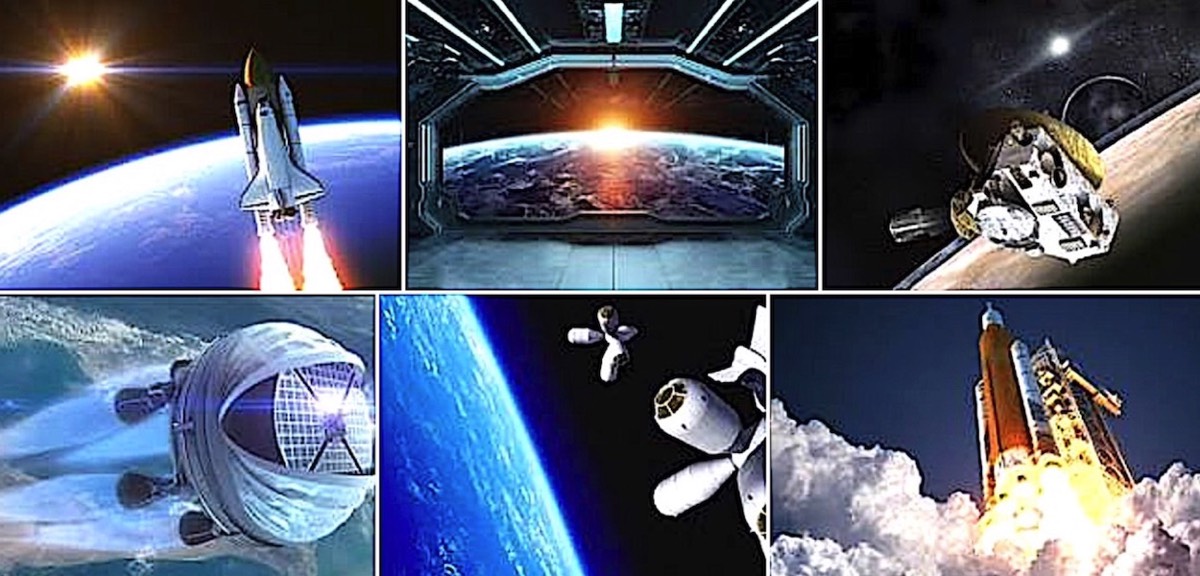
NASA’s future will continue to be a story of human exploration, technology, and science. We will go back to the Moon to learn more about what it will take to support human exploration to Mars and beyond. We will continue to nurture the development of a vibrant low-Earth orbit economy that builds on the work done to date by the International Space Station. NASA engineers will develop new technologies to improve air transport at home and meet the challenges of advanced space exploration. Our scientists will work to increase an understanding of our planet and our place in the universe. We will continue to try to answer the question, “Are we alone?”
Unlike the way the space program started, NASA will not be racing a competitor. Rather, we will build upon the community of industrial, international, and academic partnerships forged for the space station. Commercial companies will play an increasing role in the space industry: launching rockets and satellites, transporting cargo and crew, building infrastructure in low-Earth orbit. NASA will continue to be a global leader in scientific discovery, fostering opportunities to turn new knowledge into things that improve life here on Earth.
Unlike the way the space program started, NASA will not be racing a competitor. Rather, we will build upon the community of industrial, international, and academic partnerships forged for the space station. Commercial companies will play an increasing role in the space industry: launching rockets and satellites, transporting cargo and crew, building infrastructure in low-Earth orbit. NASA will continue to be a global leader in scientific discovery, fostering opportunities to turn new knowledge into things that improve life here on Earth.
Other corresponding Websites
Information Science

Science is the intellectual and practical activity encompassing the systematic study of the structure and behaviour of the physical and natural world through observation and experiment.
iScienceINT.com
International Consulting and Coaching





